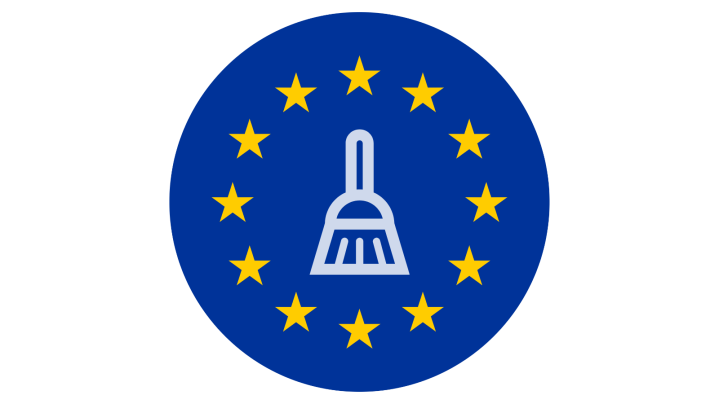



The Network and Information Systems Directive 2 (NIS2) is a European Union regulation designed to enhance cybersecurity across the EU. As the scale and impact of security breaches continue to rise, NIS2 aims to fortify the EU’s digital infrastructure and safeguard citizens from cyber threats. This directive builds upon the original NIS framework introduced in 2016, bringing updated legal measures to address evolving risks.
In this blog, we explore the NIS2 requirements for basic cyber hygiene practices and provide insights on how organizations can prepare to meet its data sanitization guidelines.
By following these 5 steps, your organization can effectively prepare to meet the NIS2 requirements:

1. Identify Obligations
Begin by thoroughly reviewing the NIS2 directive to understand how it applies to your organization and determine your specific responsibilities.
2. Review & Align Policies
Assess your existing policies, standards and procedures, then update them to align with the NIS2 regulation when necessary.
3. Assign Accountability
Designate responsible individuals or teams within your organization to oversee compliance efforts and ensure that the necessary actions are taken.
4. Conduct a Gap Analysis
Perform internal or external assessments to identify any gaps between your current practices and the NIS2 requirements, pinpointing areas that need improvement.
5. Implement & Monitor Actions
Put the necessary measures in place, and establish a process for ongoing monitoring, auditing, and updating of your compliance efforts to ensure long-term adherence.
By following these steps in your NIS2 preparation, you'll quickly recognize that implementing cyber hygiene plays a critical role in your compliance efforts. Here is what the directive states about cyber hygiene:
Article 21: Cybersecurity risk-management measures

1. “Member States shall ensure that essential and important entities take appropriate and proportionate technical, operational and organizational measures to manage the risks posed to the security of network and information systems which those entities use for their operations or for the provision of their services, and to prevent or minimize the impact of incidents on recipients of their services and on other services...”
2. “The measures referred to in paragraph 1 shall be based on an all-hazards approach that aims to protect network and information systems and the physical environment of those systems from incidents, and shall include at least the following: …"
(g) “basic cyber hygiene practices and cybersecurity training”.
While NIS2 outlines the need for “basic cyber hygiene practices”, the directive provides only general guidance on what this means. In practice, cyber hygiene involves the regular completion of key tasks in order to keep systems and networks safe. These tasks may include: updating software, using strong passwords with multi-factor authentication, managing access, backing up data with encryption, using firewalls and AI-based threat detection.
An essential component of cyber hygiene is removing unnecessary data to minimize security risks. Using secure wiping solutions helps to prevent breaches by ensuring sensitive files and deleted data cannot be recovered.
To assist your organization in maintaining strong cyber hygiene and managing the risks associated with third parties recovering sensitive data, here are 3 types of data that should be securely erased using trusted wiping software when necessary.
One of the most effective ways to comply with Article 21 of the NIS2 directive is to use reliable data wiping solutions to securely erase files beyond forensic recovery. Jetico's BCWipe provides 2 unique solutions for securely erasing data, as well as a free tool to guard against Microsoft’s default tracking features.
To request a free trial or learn more about our solutions, contact our Data Protection Specialists. For more information on complying with NIS2, find out how to meet the directive’s encryption security measures.

Hannaleena Pojanluoma has been leading Jetico as CEO since May 2023, bringing with her more than 20 years of sales, marketing and technology experience. Previously working for a range of international companies in her native Finland, Pojanluoma has a broad understanding of diverse international markets.
Pojanluoma has been essential in driving sales growth since joining Jetico in October 2015. Her efforts have been concentrated on boosting sales and brand awareness in key European countries such as the United Kingdom, Germany and Italy.
As a member of Jetico's Board of Directors, she joins influential figures such as Tommi Rasila and Umeshchandra Gowda.